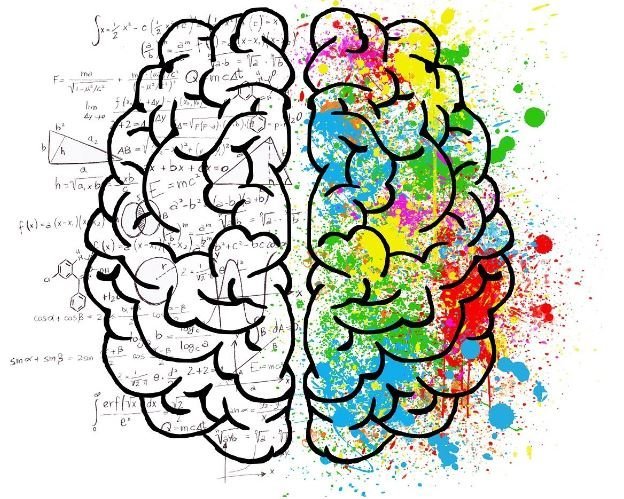Definition of Behaviorism is a concept used to understand how human and animal behavior occurs Watching a dog learn to sit when you treat it or a baby smile when you tickle them. Behaviorism examines this behavior of how and why we act in that way. It is about detective work, finding evidence to identify what facilitates an individual behavior. Rather than concentrating on the inner-mind thoughts and emotions, behaviorism looks at only observable behaviors — how people act or respond in certain situations.
The Best Behaviorism Highlight In Psychology
Psychology: — Psychology is the science of mind and behavior. There was a time when psychologists would try to think about thoughts and feelings to understand the mind. Thoughts and feelings, though are difficult to see/measurable. This is what made it tough for psychologists to tell upfront of happened.
Behaviorism motivated scientific research in other branches of psychology and was also highly valued as it allowed psychologists to make things that were more experimental akin to the sort of formal science found in chemistry or physics. These are sciences that depend on things we can see, measure, and test. And Behaviorism wanted to do the same with behavior.
Behaviorism & Objectivity in Psychology
Objectivity is defined as a state that does not allow your feelings or opinions to distinguish it. One way psychology is made objective is behaviorism, which means focusing only on things that can be observed and measured. Behaviorists do not try to decide what another person may be thinking; we look at how they are behaving.
If a child plays with a toy: A behaviorist will look at the range of experiences they have when playing (how do they pick up the toy, what actions do seem to be aimed at). Should anyone try to take that toy away from them, there would likely ensue all sorts of screaming and haymakers. It is by observing these behaviors; that behaviorists can quantify how other people can observe and concur with child behaviors.
Watching and Dose Behaviors
Observing and measuring behaviors scientifically is one of the objectives of behaviorism. So say you are a scientist investigating how much more dogs bark at loud noises. You may count the number of times your dog barks each time it hears that particular noise. It is an observation and therefore it can be perceived if anyone so desires to measure its objective. Behaviorists believe that studying this behavior will enable them to identify the causes and make changes.
Experiments in Behaviorism
Such an approach typically results in a set of experiments that behaviorists use to help provide insight into how behaviors come about. Experiments change an environmental factor to measure its effect on behavior. This might mean, for instance, that they reward a rat with some sort of treat every time the animal pushes on a lever. The rat will then learn that pushing the lever results in getting a treat, and so it pushes the lever more frequently. That is what behaviorists call conditioning, and it is the most basic way to study how the environment changes behavior.
These experiments are critical as they allow the behaviorist to understand behaviors and naturally occurring rules in a very focused and transparent manner. If these animals respond the same way when repeating experiments, behaviorists are more likely to believe their results.
The Works of Famous Behaviorists
Two of the most well-known behavior risers are John B. Watson and B.F. Skinner. They contributed to the shaping of behaviorism, which was a significant branch of psychology.
Watson argued that psychology focuses only on observable things, such as behavior. He believed that anything you could not see, for example, a thought or feeling; would not be science if studied. In the famous Little Albert experiment, Watson demonstrated how one could condition a fear of white rats in a child by pairing exposure to it with an emotional stimulus (the sound of loud noise).
The experiment illustrated how behavior can be defined by what is present within an environment.
Whereas B.F. Skinner expanded on Watson’s ideas and created the notion of “operant conditioning.” It is the idea that behaviors can be conditioned, or changed through what happens after a behavior. Like, A student will get a sticker whenever he does his homework then it’ll make him try to do more and more. Working with animals, such as pigeons and rats, in experimental conditions to demonstrate behavior could be controlled through rewards (reinforcement) or punishment — was the basic innovation of Skinner.
How Behaviorism can be applied in real life
This is an example of how behaviorism does not only occur in a lab with scientists. It can be given the common expression as well. Behaviorist ideas are used by teachers, parents, and even animal trainers to teach behavior so one need not be a researcher at all to put these theories into play.
Teachers use behaviorism in schools by rewarding good behavior, giving gold stars and extra playtime to students for doing a desired action. This incentivizes a student to continue good acts of his own. For example, if a student blurts out too soon while on the rug, they will miss a fun activity.
Behaviorist notions are too frequently seen in the practice of parenting One of these is when a parent praises their child for tidying up the room, because after this praise they will clean it again. Similarly, parents might declare that dessert does not follow until vegetables are consumed — if a child refuses these last.
Behaviorism: Animal trainers (i.e., dog, dolphin, or animal shows) Reward treats are used to get animals to perform tricks or do whatever they have been trained to. Gradually, the animals realized that if they did what was good and proper we would give them a treat, so it became something they kept on doing.

Limitations of Behaviorism
Behaviorism has been powerful in explaining and controlling behavior, but it also has its limits Only it overlooks thoughts, feelings, and emotions which are another vital aspect of our humanity. Or consider, two students might both be acting out in class but one is happy and the other sad. Behaviorism will not be able to catch this difference because it only sees the behavior and not what’s going on in your brain.
Also, behaviorism does not explain why people feel the need to behave as they do It might show that rewards can promote positive behavior, for instance, but it fails to address why someone might try hard in school even when other reinforcements are absent.
Final thought: Behaviorism and the Effects on Philosophy
Overall, behaviorism attempts to allow psychology to be considered on the same level as other natural sciences by only scrutinizing behaviors that are observable and can be measured. It has done wonders for psychologists in the comprehension of how behavior functions and develops due to the environment. Behaviorism has been used to shape education, parenting, and even how we train animals through experiments in psychology.
While behaviorism is strongly limited, it does offer some idea of how we learn and adapt. Behaviorism has contributed to making psychology more scientific, by emphasizing objective observation and measurable behavior upon which theories are based; it also provided practical techniques for modifying human behavior in everyday life.


